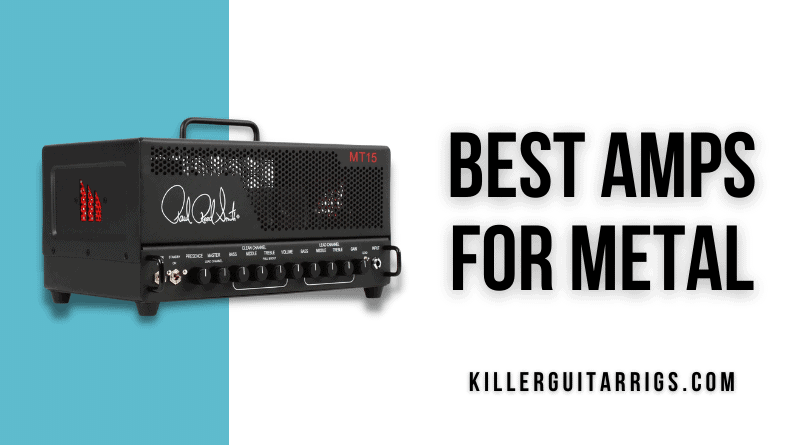When one thinks of the best amps for metal, perhaps the top concerns that come to mind are ensuring they have tons of gain and the ability to handle lower tones, including detuned guitars.
Naturally, pedals can be employed and even deliver great results. However, there’s a certain magic in the sound you can get from a tube amp that’s been pushed to extreme distortion. As a matter of fact, many of the most legendary metal recordings obtain their high-gain tones directly from the amps employed.
Nowadays there are more options than ever before. They come in a great variety of sizes and features and can deliver killer metal tones if you pick wisely. How do you make sense of all the choices out there? We’re here to help. Keep reading.
Read more about our review process.
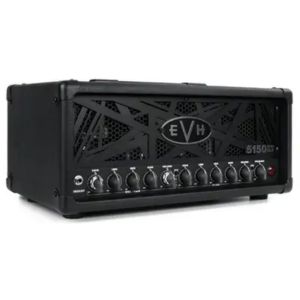
EVH 5150III 50S 6L6
Features: 4 Button footswitch, 3 Channels, 6L6 Power tubes
Benefits: Enormous output, Delivers pristine cleans and devastating chug, Matches a range of cabinets
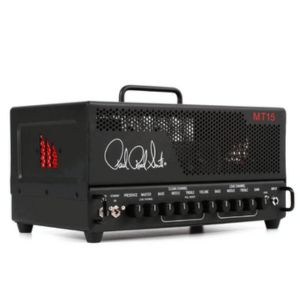
PRS Mark Tremonti MT15
Features: Built in attenuator, 15 Watts of tube power, 2 Channel design
Benefits: Ideal for pratice and small gigs, Easy to transport, Huge amounts of gain
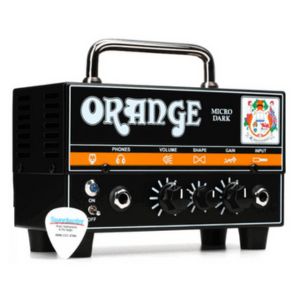
Orange Micro Dark
Features: 12AX7 Tube preamp, Metal housing, FX Loop
Benefits: Ultra lightweight, Easy to set up, Savage distorted tones
Contents
Our Top 3
The PRS Mark Tremonti MT15 is our Top Pick. This amp provides excellent high-gain sound and features two big 6L6GC output tubes as a design feature requested by Tremonti.
The Orange Micro Dark 20-watt Hybrid Head is our Best Budget choice. This is a small yet powerful amp head from the popular Dark series from Orange amplifiers and comes with searing gain and versatility that are truly affordable.
Finally, the EVH 5150III 50-watt Tube Head is our Editor’s Choice. This amp is for the discerning guitarist who is willing to spend for quality. It delivers the power of Eddie Van Halen’s tone on a smaller head that’s capable of tremendous gain.
Individual Reviews
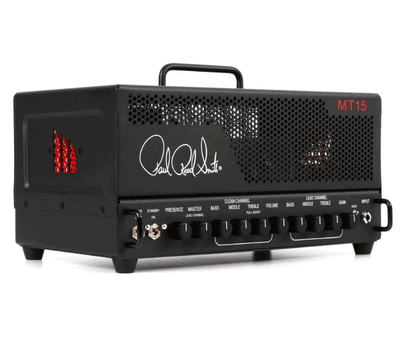
PRS Mark Tremonti MT15
Tremonti’s explosive high-gain tones in a compact unit.
PRS has gone beyond producing superior guitars, and this amp is further proof of that. With a compact size, it manages to deliver ferocious distorted tones and ample cleans with fantastic Paul Reed Smith quality and inventiveness.
The PRS Mark Tremonti MT15 amplifier provides fantastic high-gain sound on a low-wattage lunchbox head. This amp is particularly good for the studio and smaller venues and offers portability and an affordable price.
The MT15 is a 15-watt head that features two big 6L6GC output tubes (Tremonti’s preference), instead of the more common 6V6s or EL84s tubes commonly associated with this wattage. For the front end, you get six 12AX7 tubes and a 2-channel preamp: one Lead and one Clean.
For the Lead channel, you get controls for gain, treble, middle, bass, and master. The Clean channel gives you volume, a pull boost treble, middle, and bass controls. Both channels share a presence control.
On the rear, you’ll find a half-power switch that brings the output down to 7 watts, to send and return jacks for your FX loop. There are also dual parallel 8-ohm outputs and a single 16-ohm out.
We turned on the MT15 on Clean and saw blue LEDs light up. We tested this amp with our Les Paul and got nice and articulate cleans, great for rhythms and even some clean soloing.
Then we switched on the Lead channel, and the LEDs turned red. The distorted sound was powerful, gnarly, and balanced. The Lead channel has tons of gain and can take you from something mild to scorching distortion.
We particularly liked it at higher distortion settings and using our bridge pickup on the Les Paul. In short, a fantastic amp that packs a punch and then some.
Verdict: The PRS Mark Tremonti MT15 amp offers great rock and metal tones on a compact and convenient unit. At 15 watts, this amp delivers enough volume and punch for smaller venues and studio use, with that Mark Tremonti sound and quality.
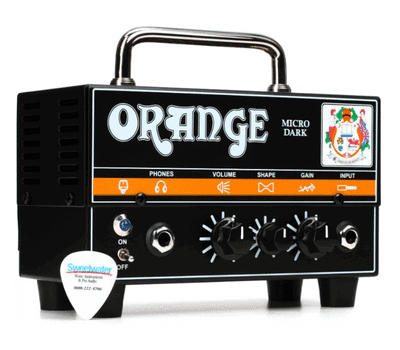
Orange Micro Dark 20-watt Hybrid Head
A small yet powerful amp head with a streamlined design.
This amp belongs to the popular Dark series from Orange amplifiers, renowned for its burning gain and versatility. Besides great tone on a small package, this amp gives you 20 watts on a very affordable unit.
The Orange Micro Dark 20-watt Hybrid Head features a solid-state power amp and a single ECC83 tube in the preamp. This amp comes with a new high-gain circuit that features four stages, so the tone production doesn’t all fall on the tube.
Other features include a buffered effects loop, a Shape control, a master volume on the left side, and a preamp gain control on the right.
We tested this amp with our Fender Strat. We got a nice open clean tone that did well on just about anything a Strat is great for, including funk rhythm with the pickup on position 4, a bit of blues on position 2, and nice open chords on positions 1 and 5.
With distortion, we got an aggressive tone with scooped mids. Our Strat has a humbucker on the bridge that paired great with the Micro Dark. We got tons of sustain and bite for heavy riffing. We even tried it in Drop D and got nice lows with that extra heaviness for metal playing.
The design of this amp is simple and straightforward. On the front panel, you get a power switch, headphone output (with speaker emulation for DI recording), master volume, shape, gain, and guitar input.
On the rear panel, you’ll find an effects loop send and return, and an 8/16-ohm speaker output. In short, a small and light, but powerful amp that is great for practicing and for beginners who seek affordability but don’t want to compromise on quality. Easy to see why it’s not only the best budget amp on this list, but also on our list of best mini amp heads.
Verdict: The Orange Micro Dark 20-watt Hybrid Head offers an ideal combination of quality, portability, and price. It’s a great option for students and folks who want a quality amp on a budget, with great convenience and Orange’s durability.
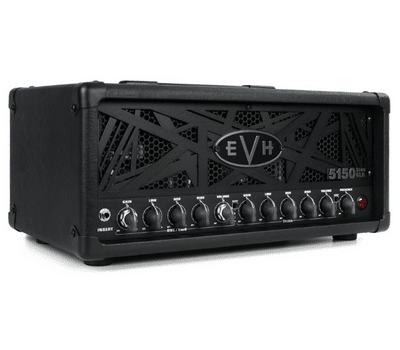
EVH 5150III 50-watt Tube Head
The power of Eddie Van Halen's tone on a smaller head.
A special amp head for discerning players that value quality over anything else. This amp has that overall Eddie Van Halen tonal vibe, with tons of killer gain but remains versatile at the same time.
The EVH 5150III 50-watt Tube Head features two 6L6s tubes and seven 12AX7s tubes, on a three-channel configuration for clean, crunch, and molten lead tones respectively.
Both the clean and crunch channels share the same EQ, gain, and volume knobs, while a presence and a resonance knob control the high-end cut and low-end. On the other hand, channel 3 features modern EVH liquid gain for unique modern and distorted tones.
We started our tests with our Strat on the clean channel. We set the preamp gain at about 9 o’clock and got a penetrating yet balanced clean tone that can work in a variety of situations, particularly for clean tones needed on rock settings.
For the crunch channel, we switched to our Gibson Les Paul to try it with humbuckers on the bridge and neck positions. Here we got a thick midrange and nice low that reminded us of Van Halen‘s celebrated brown sound.
Although all three channels sound good, the Crunch channel was our favorite on both Les Paul and Strat. Here we got everything from tons of gain for a heavier sound that works wonders on hard rock when paired with the bridge pickup of a Les Paul, all the way to classic rock tones that delivered on both Strat and Les Paul.
For more extreme tones, the third channel is the way to go. Once you turn the gain past 1 o’clock, you’re in Metal territory, especially when paired with a humbucker.
We really liked how this amp was designed. You get the same set of knobs for channels 1 and 2, but a different one for channel three. This makes it easier to go from a cleaner or overdriven sound to a more aggressive distortion on a whim.
Other useful features include an effects loop, headphone jack, selectable impedance of 4, 8, or 16 ohms, and dual parallel speaker output jacks as well as a line output. In short, a fantastic amp for the dedicated player that needs killer Metal tone and versatility.
Verdict: The EVH 5150III 50-watt Tube Head comes with great-sounding 6L6s and 12AX7s tubes and a practical three-channel configuration. It builds on the legacy of tone that Eddie Van Halen left us and delivers a fantastic sound that is versatile for Metal and beyond.
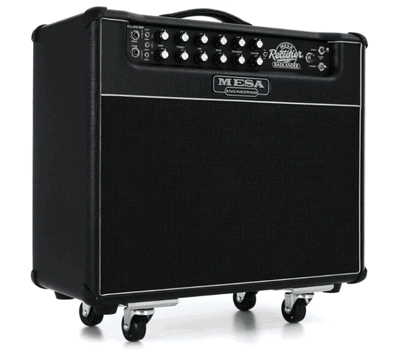
Mesa/Boogie Rectifier Badlander 50
Legendary tone in a combo amp that delivers.
The Rectifier tone is among one of the most beloved in rock history. The Bandlander 50 comes in a combo version that produces scorching gain for metal tones, and more.
The Mesa/Boogie Rectifier Badlander 50 delivers high-gain metal tones on two channels that come with three selectable modes for versatility. Each channel offers 3-mode Channel Cloning, with Clean, Crunch, and Crush modes.
Each channel has Gain, Treble, Mid, Bass, Presence, and Master knobs so you can easily dial the tone you’re after. This amp also features a 2-way power reduction switch to switch between 20 watts and 50 watts.
Additionally, Mesa Boogie also included a Bias switch that lets you alternate between the EL34 power tubes to the more powerful 6L6s.
One of the most impressive features of this amp is the built-in CabClone IR for cabinet simulations. This feature is a reactive load box and IR cabinet simulator and comes with cabinet impulse responses with miked with dynamic and ribbon mics, and you can also load third-party IRs.
For our tests, we grabbed our Les Paul and went straight into overdrive. We got a fat tone with a lot of attitude, appropriate for a variety of settings especially rock, blues and overdriven pop.
We really liked the crush mode, which gave us tons of high gain while still retaining nice definition, ideal for rock and parts where your want punch and clarity at the same time. When pushed harder, this amp sounds great in part thanks to the 1 x 12″ configuration featuring a Celestion Creamback 65 Speaker that’s very precise and responsive.
As good as this amp is, some folks may be turned off by the many features, especially the Impulse Responses that typically appeal to more tech-savvy players.
Verdict: The Mesa/Boogie Rectifier Badlander 50 can give you everything from powerful high-gain metal tones to nice cleans and punchy overdrive. With a convenient two-wattage option and fantastic build, this amp is a good option for metal and rock players looking for a combo amp that delivers.
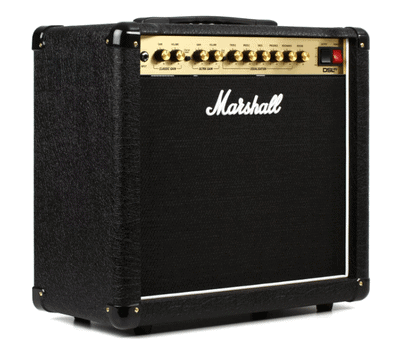
Marshall DSL20CR
A combo amp that brings portability to metal and rock.
Marshall needs no introduction among guitar players. Their sound has forged Rock's history, and the company keeps moving forward with great solutions for guitar players. This amp offers combo convenience while providing Marshall quality and tone in a reduced all-in-one package.
The Marshall DSL20CR is a versatile two-channel combo amp with an all-tube design. This 20-watt amp offers you Marshall sound at a relatively affordable price. It comes with two EL34 power amp tubes and three ECC83 preamp tubes.
The cabinet features a Celestion Seventy 80 12-inch speaker with a rating of 80 watts at 16 ohms. The DSL20CR has a ported semi-open-back design in order to keep bass frequencies tight.
This Marshall combo amp features two individually voiced channels with independent Gain and Volume controls while sharing a set of EQ controls as well as a global reverb level control. Besides the common bass, treble, and high frequencies knobs, this EQ section also comes with a Tone Shift button to give you further control of the midrange frequencies.
On the rear panel, you’ll find quarter-inch Send and Return jacks for the FX loop, a 1/8-inch audio input, and a quarter-inch jack for the included footswitch. On top of that, you also get a 1/8-inch output jack for sending your signal to a recording interface or mixer.
We tested the DSL20C with both our Strat and Les Paul, and it sounded just as expected, with Marshall attitude, grittiness and sustain for days. We particularly liked how this amp paired with our Strat, as the single coils gave us a crisp and snappy clean.
With overdrive, we got a nicely voiced sound that can be used in many contexts, making this amp versatile. Naturally, when we dialed in more distortion, we got fat and punchy midrange, particularly with our Les Paul. However even at distorted settings, we preferred our Strat, as it kept the sound defined and gnarly at the same time.
Both channels sounded great, with the Ultra channel providing more gain, so you can set it up for more distorted sounds or uses. Overall, a great-sounding amp at this size and budget, but one that may not fully please Marshall enthusiasts that love double-stack power and sound.
Verdict: The Marshall DSL20CR is a tube combo amp featuring a tube design for fantastic hard rock and metal sound. At 20-watts and built for the rigors of the road, this amp is a great option for folks that want to downsize their rig without affecting their tone too much.
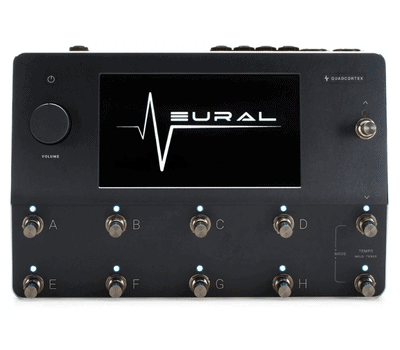
Neural DSP Quad Cortex
The ultimate tone machine at your feet.
If you are looking for superior tone and ultimate portability, the Quad Cortex is hard to beat. With seemingly endless features, this floor unit gives you impressive flexibility and sends your tone to wherever you need it to go without the need for an amp or cab.
The Neural DSP Quad Cortex is a state-of-the-art modeling floorboard with an impressive amount of high-quality features. Here you get professional sound and maximum flexibility to route it any way you want it while remaining portable.
Features like an integrated looper, Quad-Core SHARC DSP, configurable I/O, dual-function Rotary Switches and 7-inch multi-touch display have made this the go-to option for many touring professionals.
A very powerful unit for guitarists and bassists, the Quad Cortex gives you more than 70 stomps, 50 amps, and 1,000 cabs. These are designed as building blocks for creating and tailoring your sounds any way you want them, and its extensive I/O options let you send them in a vast variety of ways.
In other words, you get a wide palette and tons of flexibility. Furthermore, you can download presets from the cloud with no computer required, so your number of possibilities for tones and sounds is endless.
We tried this unit with our Strat and went straight for some of the amp models. The Quad Cortex has spotless recreations of several amps and our favorites were the Fender ’65 Twin Reverb and the Roland JC-120.
Despite all the features on the Quad Cortex, we found it relatively easy to use, and we were able to manipulate our tone at will. We particularly liked how flexible this unit is, from sound tweaking to how to send our signal. And it’s all housed on an anodized aluminum chassis to stand up to the riggers of the road.
As amazing as this unit is, some folks will be turned off by its high price. The same can be said about the features and possibilities in this unit, which will be overwhelming for those just looking to plug in and play.
Verdict: The Neural DSP Quad Cortex is a comprehensive modeling floorboard with a large number of features for ultimate tone quality and flexibility. This unit is for professionals who like to go deep into the nuts and bolts of their sounds while having a portable option that does away with amps and cabs.
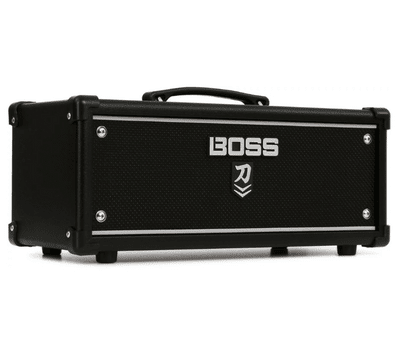
Boss Katana Head MkII
Ferocious metal power with modern features from the stompbox giant.
Boss is arguably the most popular company for guitar effects pedals. However, they have also made inroads with their newer amps, especially their Katana series, and this model is a great option for a variety of guitarists, including Metal shredders.
The Boss Katana Head MkII is a versatile amp head featuring five amp voicings, effects, and editor software. Although it’s an amp head, it includes a miniature five-inch speaker for practicing.
Boss designed the controls of this amp in separate groups in order to make it more user-friendly. The first group of knobs is the amp controls, where you’ll find an amp select knob, gain, and volume.
Next is a typical three-band EQ, followed by the effects section. The effects group is divided into three groups: Booster Mode, FX Delay and Reverb each with a dedicated knob.
The last section is for tone, and it includes knobs for attenuation, presence, and master. Above these, you get four buttons for each of the channels on this unit.
The channels in question are labeled acoustic, crunch, lead, and brown. These are self-explanatory and make this Katana Head a very versatile option for guitarists of different styles.
As expected, Boss included amp emulations into the Katana series (including the ever popular 50w combo) and the MkII head is no exception. We started our tests with our Strat on the clean channel and got a nice open and twangy sound from our instrument.
Each subsequent channel acts like a layer of extra crunch and each builds nicely from overdrive to aggressive metal-like distortion. Although we liked how our Strat sounded on all four channels, we preferred our Les Paul for the Lead and Brown channels. The PAF pickups seemed to give an added punch to distorted lines and riffs on those channels.
Although the Acoustic channel is no replacement for a dedicated acoustic guitar amp, it does add to the versatility of this unit. In short, a nice and versatile amp for beginners to mid-level guitar players. Professionals may want to look elsewhere.
Verdict: The Boss Katana Head MkII provides versatility and convenience for different styles, including metal. With its five amp voicings, effects, and editing software, this amp head is a fantastic option for beginners that want a nice-sounding option to practice and gig with.
How to Choose The Right Amp For You
An amp is largely a personal choice, much like a guitar. In other words, it is important that you try different amplifiers and see what you like and what works for you. There are many types of amps that can do a great job for metal, so the more you develop your criteria, the stronger your amp choice will be.
That said, below we provide some general guidelines that can help you decide which metal amp is right for you.
Solid State
A solid-state amp relies on transistors to turn and amplify an electric signal into an audio wave. Solid-state amps tend to be more affordable than tube amps and are far more durable. Because they don’t have tubes (which are relatively fragile), solid-state amps can withstand live use a bit better.
However, the trade-off is that they don’t sound as warm and organic as tube amps. This is especially true when it comes to amp-generated distortion.
Tube Amps
Tube amps are generally preferred among guitar players who can afford them. Although not all models are necessarily expensive, tube amps are more costly than equivalent solid-state amplifiers.
Naturally, tube amps are preferred because they sound better than solid state. This is because tubes have a more organic, realistic, and full-bodied sound than transistors. Some refer to this as a warmth or roundness that is just not as attainable with a solid-state amp.
Modeling Amps
Modeling amps rely on digital processors to simulate the sound of tubes and solid-state amps. The advantage is that you get the sound of numerous amps in one unit.
Modeling amps and floor units had an inferior rep as tools for beginners, as they could hardly approximate the sound of a quality amp. However, they have made massive breakthroughs in recent years, particularly with more expensive models.
Hybrid Amps
As the name implies, these amps combine tube technology with the solid state on the power section of their amps. In other words, you get a tube on the preamp while the power section relies on solid-state circuitry. The idea is to get tube tone but without the need of power tubes, thus making the unit a bit more affordable.
Final Thoughts
A good metal amp can make a massive difference in your tone. It’s important to pick something that works for you and your situation. For instance, a double-stack rig with a double 4×12 cabinet configuration may sound fantastic, but it’s as impractical as you can possibly get.
Not only is that type of setup hard to transport and store, but it makes it nearly impossible to practice in your bedroom without getting evicted, arrested, or divorced.
Luckily, today we have options that can give you searing hot metal gain but remain manageable in terms of transportation and practical use. Some of these are also great options for practicing at home at decent volume levels without losing tonal quality.
To recap our choices, the PRS Mark Tremonti MT15 is our Top Pick, offering excellent high-gain and design features requested by Tremonti in order to approximate his powerful tone.
The Orange Micro Dark 20-watt Hybrid Head is our Best Budget choice, as a compact but powerful amp head that delivers tons of gain while remaining versatile.
Finally, the EVH 5150III 50-watt Tube Head is our Editor’s Choice, for the professional guitarist that values quality the most and wants the power of Eddie Van Halen’s sound on a smaller head.

